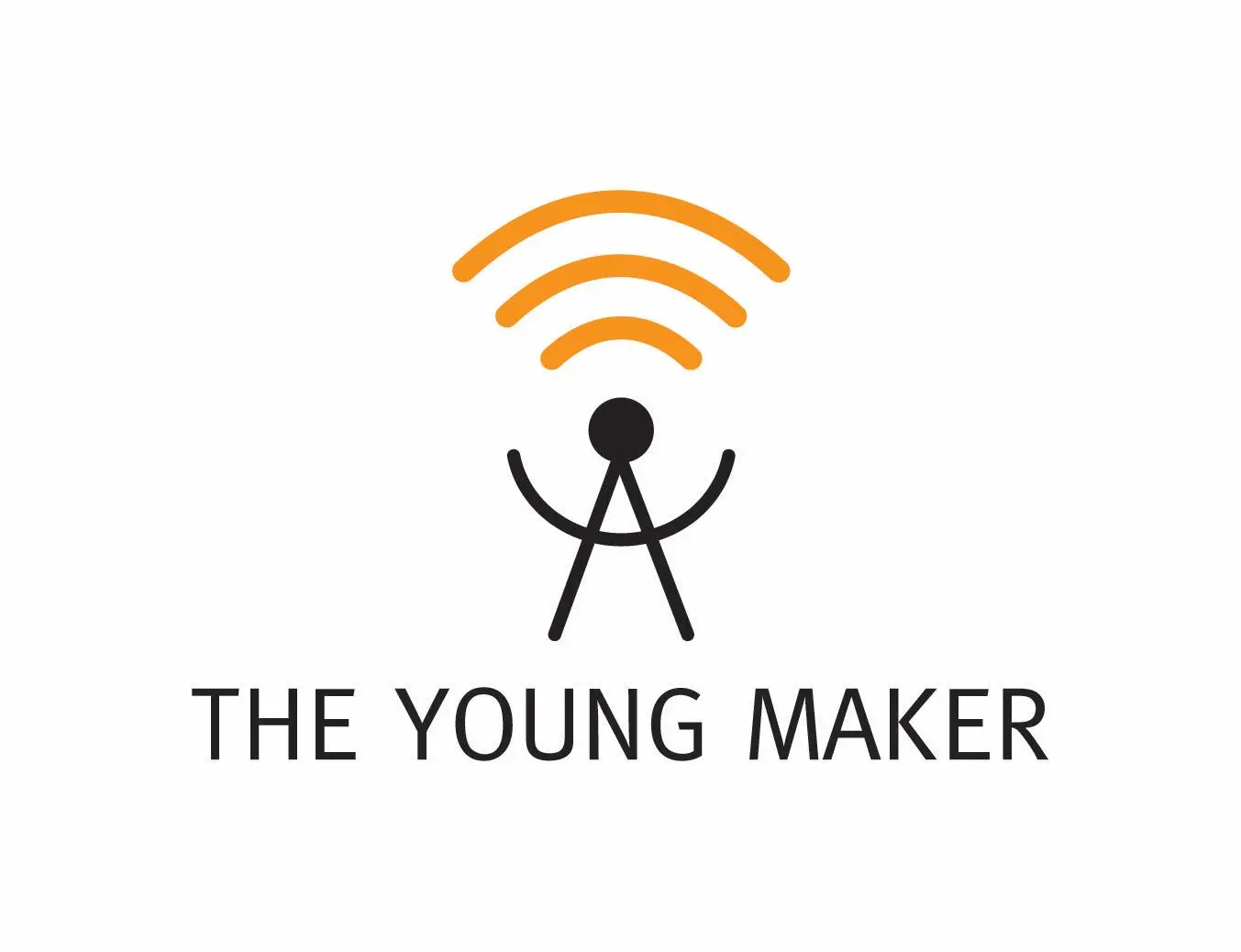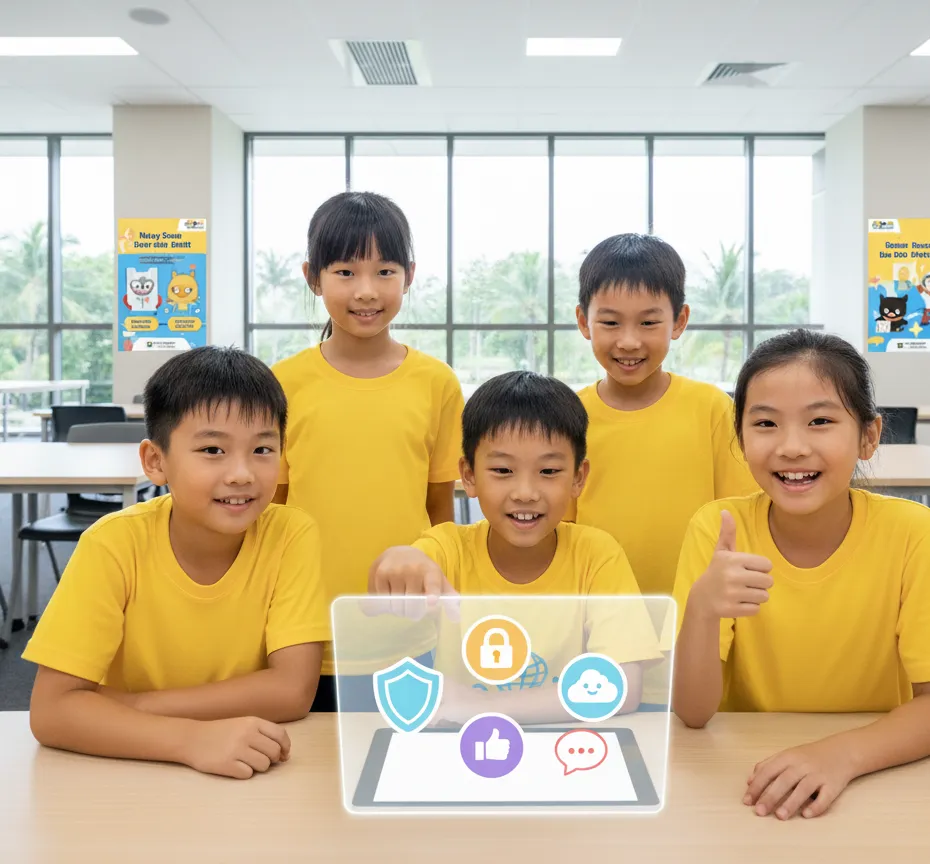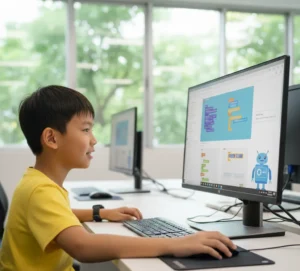Imagine learning to drive without anyone mentioning seat belts, traffic lights, or the meaning of a stop sign. You might master the accelerator, but your journey would be incredibly risky. The same is true for the digital world. Digital literacy isn’t just about knowing how to code, create content, or use a new app; it’s about knowing how to navigate these spaces safely and responsibly. This is why online safety isn’t just one item on the checklist—it’s the absolute foundation, the very first lesson in becoming a true digital citizen.
For young makers, creators, and explorers, the internet is a vast playground of ideas and a powerful tool for creation. But to wield this tool effectively, we must first learn to protect ourselves. Think of online safety not as a set of restrictions, but as the essential code that allows you to build, share, and innovate with confidence.
Why Safety is Your First Digital Tool
Before you even create your first social media account or download your first development software, understanding the digital landscape is crucial. Online safety is the core of digital literacy because it empowers you to:
- Protect Your Digital Identity: Your personal information is your most valuable asset. Learning to create strong passwords, recognize phishing attempts, and manage privacy settings is the equivalent of learning to lock your door.
- Build a Positive Digital Footprint: Every comment, post, and project you share contributes to your permanent digital legacy. Safety means being mindful and intentional about what you put online, ensuring your footprint is one you’re proud of.
- Foster Healthy Interactions: The digital world is social. Understanding online etiquette, recognizing cyberbullying, and knowing how to report harmful behavior are skills that create a better environment for everyone.
- Enable Confident Creation: When you know how to protect yourself, you feel more secure in sharing your ideas and projects. Safety unlocks true creative freedom. This is especially true as technology evolves; for a deeper dive into the future of digital wellness, explore our guide on how AI is reshaping digital safety for the next generation.
The 3 Pillars of Digital Safety for Young Makers
Let’s break down this foundation into actionable pillars. Master these, and you’ll be equipped to thrive online.
1. Shield Your Information
This is Cybersecurity 101. Your data is valuable.
- Use a Password Manager: Create long, unique passwords for every account. This is one of the most effective steps you can take.
- Enable Two-Factor Authentication (2FA): Add an extra layer of security beyond your password. It’s a simple toggle in your settings.
- Think Before You Click: Be skeptical of links in emails or messages from unknown senders. When in doubt, don’t click.
2. Cultivate Your Digital Reputation
Your online presence is your new handshake.
- Pause Before You Post: Ask yourself: “Would I be okay with my future teacher, employer, or family seeing this?” If not, don’t share it.
- Be a Source of Good: Use your voice to uplift others, share knowledge, and contribute positively to communities. The internet needs more makers like you.
- Curate Your Content: Regularly review your social media profiles and remove anything that doesn’t reflect who you are or who you want to be.
3. Engage with Critical Thinking
Not everything you see online is true, and not everyone is who they claim to be.
- Question the Source: Where is this information coming from? What is their motive? Check the credibility of the website or user.
- Spot Phishing Scams: Be wary of messages that create a sense of urgency, ask for personal details, or have grammatical errors. A legitimate company will never ask for your password via email.
- Practice Digital Empathy: Remember there’s a real person on the other side of the screen. Communicate with respect and kindness.
Building these habits early is the smartest investment you can make in your digital future. It’s the fundamental skill that allows all other digital learning to happen securely. If you want to discuss how to implement these practices in your home or classroom, don’t hesitate to get in touch with us for more resources and guidance.
Frequently Asked Questions (FAQ)
Why is online safety the most important part of digital literacy?
Because it’s the prerequisite for everything else. You can’t effectively learn, create, collaborate, or communicate online if you don’t feel safe and don’t know how to protect your identity and data. It’s the foundation upon which all other digital skills are built.
What is the biggest online safety mistake young people make?
Oversharing personal information or location details on social media and gaming platforms. Coupled with using weak, repetitive passwords, this makes them highly vulnerable to privacy breaches and account hacking.
How can I start teaching online safety to a complete beginner?
Start with simple, relatable analogies (like the “seat belt” example). Focus on one core concept at a time, such as creating a strong password. Use interactive resources like the educational games on Common Sense Education to make the learning process engaging and memorable.
At what age should I start talking to my kids about online safety?
As soon as they start using any internet-connected device, even for games or videos. The conversations should be age-appropriate. For a young child, it might be about not talking to strangers in a game chat. For a teenager, it’s about social media footprints and critical thinking. For a deeper look at this evolving challenge, our article on how AI is reshaping digital safety offers valuable insights.





